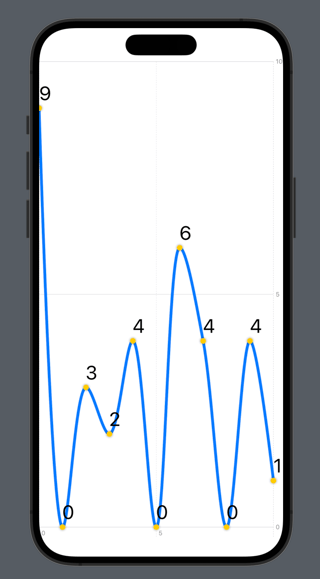I'm creating a chart in SwiftUI. It's weather related and I have the data successfully displaying. Now, I'm attempting to display the temperature on each symbol in the chart, but it only displays on the first symbol.
Here's what I've done:
Chart {
ForEach(temperatures, id: \.tempType) { series in
ForEach(series.data) { element in
LineMark(x: .value("Day", element.day), y: .value("Temps", element.temp))
.interpolationMethod(.catmullRom)
.foregroundStyle(by: .value("TemperatureType", series.tempType))
.symbol {
Circle()
.fill(.yellow)
.frame(width: 10)
.shadow(radius: 2)
}
.lineStyle(.init(lineWidth: 5))
} // end for each
} // end for each
}
This works. Then, I attempt to add text using this modifier on the LineMark:
.annotation(position: .overlay, alignment: .bottom) {
let text = "\(element.temp)"
Text(text)
}
It only displays the text on the first symbol's data point:
Since the annotation modifier is within the ForEach loop, I thought it would display the temperature at each data point, but it doesn't. What's the best way to have the temperature displayed at each symbol instead of only the first?




